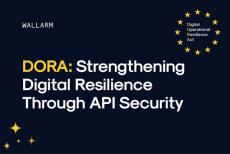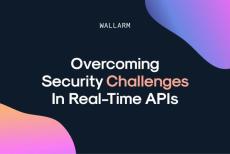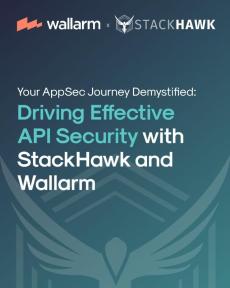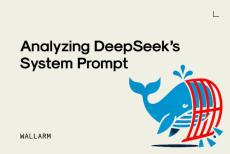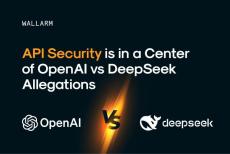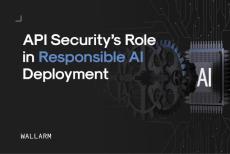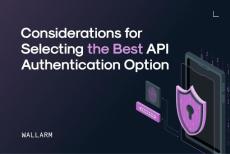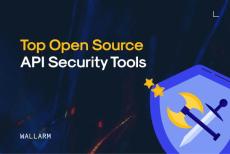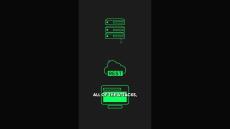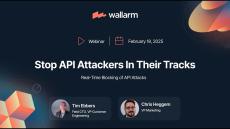|
By Wallarm
APIs present a security risk—that much is a given. Attacks on APIs have caused some of the most significant security incidents of the past decades. But the question now is: How can we flip the script and leverage their power to enhance security? Bybit might just have the answer. Bybit—one of the world’s leading cryptocurrency exchanges— recently leveraged the power of an API in the wake of a devastating security breach that resulted in a staggering $1.5 billion loss.
|
By Wallarm
The Digital Operational Resilience Act (DORA) is one of the most significant cybersecurity regulations for financial institutions in the European Union (EU). Failure to comply can have massive consequences, including financial penalties and forced operational downtime, meaning achieving DORA compliance should be a priority for all EU financial institutions. Implementing a comprehensive API security strategy goes a long way toward ensuring compliance with DORA requirements.
|
By Wallarm
Speed is everything in the modern business world. Our attention spans are shorter than ever, consumers demand short and seamless interactions, and the slightest delay in service delivery can see organizations fall far behind their competitors. This is why real-time APIs are so important; they enable systems to communicate and exchange data with minimal delay, allowing for near-instantaneous updates and interactions to create a more dynamic and responsive user experience.
|
By Wallarm
Just when CIOs and CISOs thought they were getting a grip on API security, AI came along and shook things up. In the past few years, a huge number of organizations have adopted AI, realizing innumerable productivity, operational, and efficiency benefits. However, they’re also having to deal with unprecedented API security challenges. Wallarm’s Annual 2025 API ThreatStats Report reveals a staggering 1,025% year-on-year increase in AI-related API vulnerabilities.
|
By Wallarm
DeepSeek, a disruptive new AI model from China, has shaken the market, sparking both excitement and controversy. While it has gained attention for its capabilities, it also raises pressing security concerns. Allegations have surfaced about its training data, with claims that it may have leveraged models like OpenAI’s to cut development costs. Amid these discussions, one critical aspect remains underexplored—the security of AI agents and the vulnerabilities that allow for jailbreaks.
|
By Wallarm
With a high-stakes battle between OpenAI and its alleged Chinese rival, DeepSeek, API security was catapulted to priority number one in the AI community today. According to multiple reports, OpenAI and Microsoft have been investigating whether DeepSeek improperly used OpenAI’s API to train its own AI models.
|
By Wallarm
By now, you will almost certainly be aware of the transformative impact artificial intelligence (AI) technologies are having on the world. What you may not be aware of, however, is the role Application Programming Interfaces (APIs) are playing in the AI revolution. The bottom line is that APIs are critical to AI systems – but they are also a major reason why AI systems are vulnerable to abuse. In this blog, we’ll explore why API security is critical for the safe and ethical deployment of AI.
|
By Wallarm
Implementing API authentication is one of the most critical stages of API design and development. Properly implemented authentication protects data, user privacy, and other resources while streamlining compliance, preventing fraud, and establishing accountability. In fact, broken authentication is one of the leading causes of API-related breaches.
|
By Wallarm
APIs are the backbone of modern digital ecosystems, but their misuse can expose systems to cyber threats. Effective API throttling not only optimizes performance but also acts as a critical defense mechanism against abuse, such as denial-of-service attacks. Discover how this powerful strategy enhances API security and safeguards your organization’s data in an interconnected world.
|
By Wallarm
The modern world relies on Application Programming Interfaces (APIs). They allow applications to communicate with each other, servers, and consumers to facilitate data sharing and simplify application development. Without them, the internet would be unrecognizable. However, APIs also present a considerable risk to organizations. If left unsecured, they can be a gateway for attackers to access critical data and services. Protecting APIs is extraordinarily important, but it can be expensive.
|
By Wallarm
Wallarm conducts quarterly and annual API threat reports to provide data-driven insights on API vulnerabilities, risks, and attacks. This research helps the industry understand emerging threats and improve API security strategies. Stay informed with the latest findings!
|
By Wallarm
CISOs in 2025 need a proactive API security strategy to stay ahead of threats: Start small, build strong—make 2025 the year of API security!
|
By Wallarm
Strengthen your API security with these three essential steps: Learn how one company cut API exposure by 50% with these strategies. Secure your APIs today!
|
By Wallarm
Third-party APIs often access your data, making them a security risk if not properly validated. Weak API integrations have led to massive data breaches. Learn how penetration testing and security assessments can help protect your organization from third-party threats.
|
By Wallarm
No one needs more security alerts! Wallarm is designed from the ground up to actually block API attacks in real time. Learn how you can defend against API attacks, not just detect them in this webinar. We'll review the basics of API security, along with a demo of the Wallarm platform in action.
|
By Wallarm
APIs are growing exponentially due to data integration and microservices architecture, but this expansion increases security risks. As companies scale, so does the API attack surface. Learn how to secure your APIs in an era of rapid growth.
|
By Wallarm
In 2024, API-related vulnerabilities on CISA’s Known Exploited List jumped from 20% to 50%, making APIs a prime target for attackers. This sharp increase highlights the critical need for a dedicated API security strategy in 2025. Don’t wait—invest in API security today.
|
By Wallarm
API attacks happen in real time, and delays mean lost data. Weak token security and poor documentation increase risks. Learn how to detect and stop threats instantly to keep your APIs secure.
|
By Wallarm
Wallarm’s 2024 API Security Reports reveal that new APIs are discovered in just 29 seconds. Attackers use batching techniques like GraphQL to extract millions of records in minutes. Learn how to protect your APIs from rapid data theft and evolving threats.
|
By Wallarm
Wallarm’s 2024 API Security Reports reveal that new APIs are discovered in just 29 seconds. Attackers use batching techniques like GraphQL to extract millions of records in minutes. Learn how to protect your APIs from rapid data theft and evolving threats.
|
By Wallarm
The main task of the run-time application security is to protect modern applications and APIs. In this endeavor the solutions face a number of challenges: Download this whitepaper to learn how Wallarm solves the difficult task of effective application security by relying on AI and machine learning including a unique combination of hierarchical clusterization, statistical n-gram based models, recurrent neural networks and reinforcement learning.
|
By Wallarm
Attack detection is critical for most security solutions, whether we are talking about a load balancer-based (NIDS, WAF), host-based or in-application solutions (HIDS, RASP). Interestingly, regardless of the differences in architecture and data flow, most solutions use similar detection principles and techniques. We will explore how the detection architecture evolved over time and how the new generation of detection logic, such as the architecture implemented by Wallarm, is principally different from that of the legacy solutions.
|
By Wallarm
In this comprehensive Q2-2023 report, we reflect on an intensified API threat landscape, underlining prevalent threat vectors, susceptible APIs, and new dimensions in the API security arena. With the inclusion of bug bounty analysis and our inaugural API Security Awards, this report provides granular insights into the current state of API security.
|
By Wallarm
The following guidelines will help senior stakeholders set strategy to secure modern applications, learning: Applications are the operational mechanism for how a modern enterprise conducts transactions and uses data. Whether internal or customer-facing, apps are critical for your successful business operations. That means securing apps should be a business priority.
|
By Wallarm
This 2022 recap report looks back at the deteriorating API threat landscape, the most prevalent types of threat vectors, the most vulnerable types of APIs, and much more to provide API security and DevOps teams the data-driven insights needed to improve API security in 2023. One of the main take-aways is that the API threat landscape is becoming ever more dangerous. We make this assessment based on the 2022 data, and specifically these four trends.
- March 2025 (1)
- February 2025 (13)
- January 2025 (13)
- December 2024 (10)
- November 2024 (15)
- October 2024 (15)
- September 2024 (16)
- August 2024 (9)
- July 2024 (7)
- June 2024 (5)
- May 2024 (4)
- April 2024 (4)
- March 2024 (7)
- February 2024 (3)
- January 2024 (5)
- December 2023 (2)
- November 2023 (5)
- October 2023 (3)
- September 2023 (11)
- August 2023 (8)
- June 2023 (2)
- May 2023 (1)
- April 2023 (2)
- March 2023 (5)
- February 2023 (1)
- January 2023 (2)
Security and DevOps teams choose Wallarm to discover all cloud-native APIs and legacy web applications running in their environment, and to detect & respond to threats against them.
Whether you need to protect your brand-new cloud-native APIs or your legacy web apps, Wallarm API Security platform delivers all the capabilities to secure your business against emerging threats.
Comprehensive Protection for APIs and Web Applications:
- Coverage: Protect all your internal and public-facing APIs & web applications regardless of protocol across your entire infrastructure to ensure comprehensive protection.
- Detection: Identify, consolidate and prioritize advanced risks – including OWASP Top-10 risks, API-specific threats, and API abuse – to improve security team effectiveness and reduce workload.
- Response: Assess and remediate any weaknesses which expose you to attack and automatically add new against any further breaches.
Protect Apps in a Cloud-Native Era.



